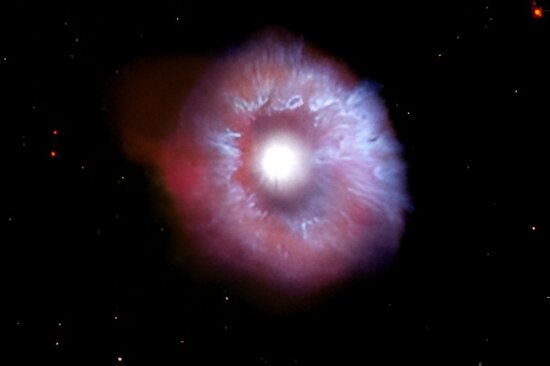
Astronomers Spot a Massive, Hidden Neighbor Called EOS
So get this—astronomers just stumbled across something huge that’s been hanging out practically next door (cosmically speaking) this whole time. It’s a massive molecular cloud containing about 3,400 times the mass of our Sun. They’re calling it EOS, after the Greek dawn goddess, and honestly? It’s got everyone scratching their heads about what else we might’ve missed in our own celestial backyard.
How’d We Miss Something This Big?
I mean, seriously. The thing spans roughly 130 light-years. That’s… well, that’s absolutely enormous. And yet somehow we didn’t spot it until last month.
The team that found it was analyzing ultraviolet data in search of hydrogen gas when they noticed weird readings that didn’t match up with known objects. At first they thought their equipment was glitching—wouldn’t you? But nope, it turns out there’s just been a gigantic cloud of molecular gas hanging out where nobody thought to look.
Kind of makes you wonder what else is out there, right?
The Perfect Hide-and-Seek Champion
So why didn’t we see this thing before? Blame our own galaxy’s usual methods.
EOS remained hidden because it lacks the usual carbon monoxide signature that astronomers rely on to spot molecular clouds. Instead, it was detected through far-ultraviolet spectroscopy, which allowed scientists to see molecular hydrogen—a much harder substance to trace. That, combined with its location within the Local Bubble, a low-density region of space near our solar system, made it extremely tough to find with traditional tools.
The breakthrough came when scientists combined radio telescope data with infrared and ultraviolet observations. These wavelengths can penetrate areas that block visible light, so when they merged these different types of observations—boom!—suddenly there’s EOS, just hanging out like, “Took you long enough to notice me.”

Cold Now, Stars Later?
What’s got astronomers all worked up isn’t just finding something this big so close by—it’s what the cloud might do in the future.
The readings show EOS contains super-cold molecular hydrogen in dense pockets throughout its structure. This is exactly the kind of environment where gravity can eventually pull gas together tightly enough to form new stars. That said, current observations haven’t detected any actual star formation activity yet—but it’s got all the right ingredients.
Astronomers are keeping an eye on it to see if any regions start showing signs of gravitational collapse. If those areas condense, our descendants might witness the birth of an entirely new star cluster relatively close to Earth.
Wait, How Well Do We Know Our Neighborhood?
This discovery has thrown a wrench into a lot of assumptions. Most astronomers figured we had a pretty decent map of our local galactic arm—the Orion Spur, where our solar system sits. Finding EOS is like discovering there’s been an uncharted mountain range just over the horizon from your hometown.
At around 300 light-years away, EOS’s gravitational influence on us is negligible (so no, it won’t be sucking Earth out of orbit or anything dramatic). But in cosmic terms, that’s practically next door.
The fact that something this massive could evade detection for so long makes you wonder what else might be lurking nearby. Dark matter? Unknown nebulae? Ancient alien megastructures? OK, probably not that last one, but you get my point.
The Race to Study EOS Is On
Since word got out about EOS, telescope time to observe it has become the hottest commodity in astronomy. Labs and universities are practically arm-wrestling for observation slots.
Some research groups want to map its exact boundaries and composition. Others are hunting for signs of protostars—the compressed gas pockets that might eventually become stars. A few teams are focused on how fast it’s moving and whether it might collide with other clouds someday.
Astronomy often progresses slowly, but discoveries like this kick everything into high gear. The community’s excitement is palpable—this is the kind of find that launches careers and spawns decades of follow-up research.
An Exciting, Unknown Future Awaits
For those of us regular folks who like gazing up at the night sky, sadly EOS isn’t something we can see with backyard telescopes. It remains invisible to standard instruments due to its unique composition and the specialized ultraviolet data needed to detect it. But next time you’re stargazing, maybe think about what else might be out there that we just can’t see yet.
The universe keeps reminding us how little we actually know—even about our own cosmic neighborhood. And that’s what makes astronomy so damn cool.









